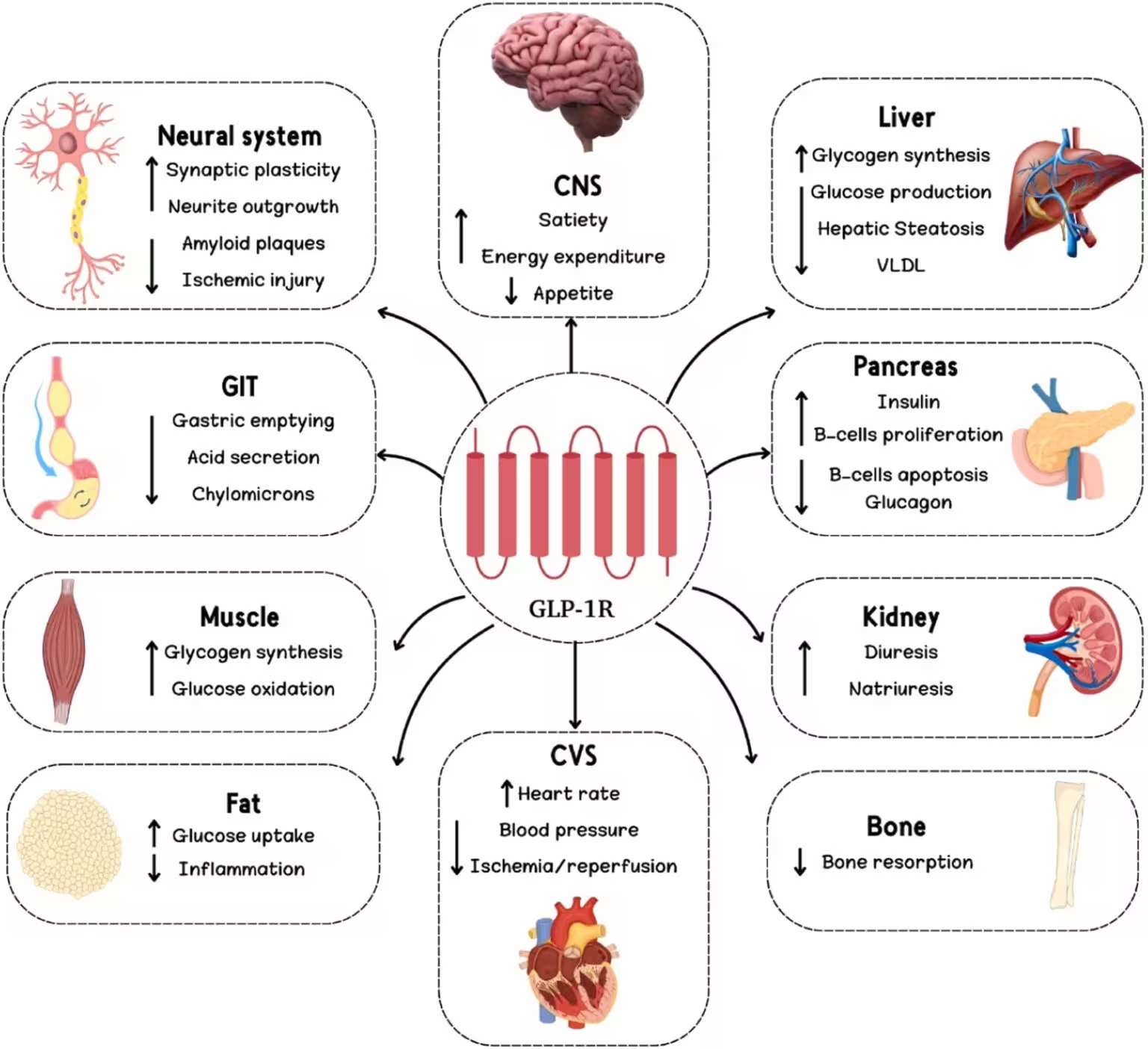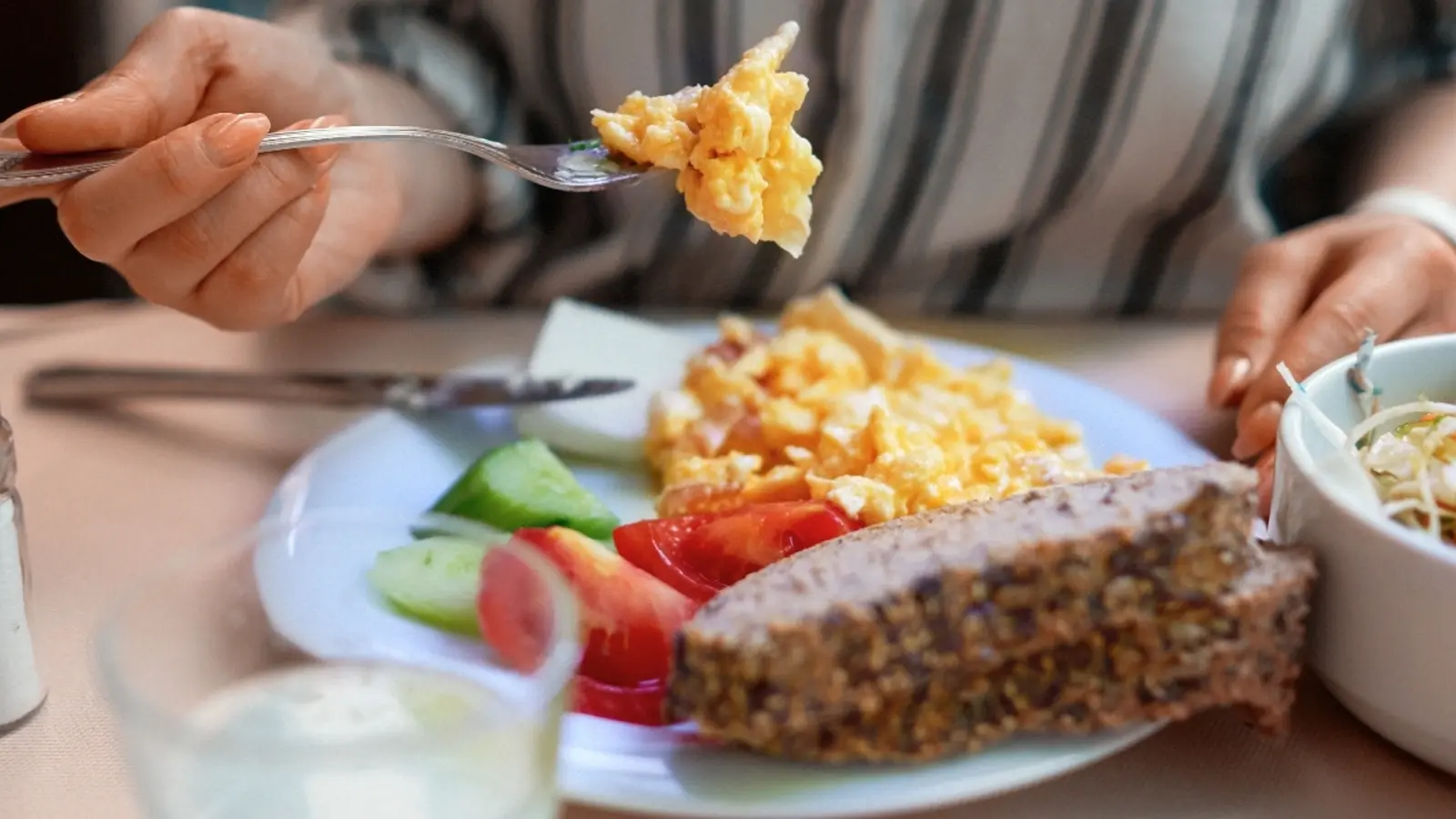6 Minutes
Drugs such as Ozempic have reshaped diabetes care and weight management by targeting gut-to-brain signals. Recent reviews and clinical trials suggest that certain foods, timing strategies and plant compounds can partially tap the same gut-hormone pathways—most notably GLP-1—without injections.
Small dietary choices can change how your body senses hunger and controls blood sugar. Below we explore the science behind natural GLP-1 modulation, the foods under investigation, and what early clinical trials are revealing about premeal strategies and plant-derived compounds.
Why GLP-1 matters: the hormone behind appetite and glucose control
GLP-1 (glucagon-like peptide-1) is a hormone produced in the gut that helps regulate appetite, slow gastric emptying and stimulate insulin secretion when glucose rises. Pharmaceutical GLP-1 receptor agonists—like semaglutide, the active ingredient in Ozempic—are engineered to resist rapid breakdown by enzymes such as dipeptidyl peptidase-4 (DPP-4), giving them prolonged action in the body.
Natural GLP-1, however, is short-lived. That momentary spike after eating is one reason researchers are investigating whether timing meals or adding certain foods can coax the gut into producing more of the hormone at useful moments.
Which foods and compounds show promise?
A systematic review by researchers led by Tohada AL-Noshokaty at Heliopolis University highlights several natural candidates that may influence GLP-1 signaling. None so far reproduces the long-lasting pharmacology of GLP-1 agonists, but early evidence points to measurable metabolic effects.
- Cinnamon, berberine and ginger: Traditional medicinal plants that show biochemical activity related to glucose metabolism and gut-hormone release.
- Fermented green tea: Fermentation changes polyphenol profiles and gut microbiome interactions, potentially affecting GLP-1 stimulation.
- Dietary fibers and flavonoids: Fibers can alter gut transit, fermentation and short-chain fatty acid production; flavonoids in citrus and hops may stimulate GLP-1 secretion.
- Whey protein as a premeal: A practical, evidence-backed approach tested in randomized trials.
.avif)
Exploring natural products that modulate GLP-1
What clinical trials tell us about timing—and whey protein
Timing appears crucial because endogenous GLP-1 spikes are brief. Several randomized controlled trials from the past year explored a simple behavioral tactic: drinking a small whey protein preload about 15 minutes before a meal.
In a September 2025 trial, 18 adults with obesity but without type 2 diabetes drank either whey protein or water 15 minutes before breakfast and again before lunch for four days. Participants who had the whey preload showed lower post-meal glucose excursions after breakfast and modest appetite suppression before lunch. Investigators speculate the effect involves augmented GLP-1 release from the gut, which then influences insulin secretion and appetite-regulating neural signals.
That kind of targeted, time-sensitive intervention is appealing because it’s low-cost, widely available and easy to integrate. But the benefits appear short-term, and we need larger, longer studies to assess sustained effects on weight and diabetes risk.
Dietary fiber, flavonoids and fermented foods: subtle but synergistic
Meta-analyses also support the role of dietary fiber in improving blood glucose control and insulin sensitivity among people with overweight or obesity. The mechanism is still being teased apart, but researchers suspect fibers may boost GLP-1 release by altering fermentation in the colon and producing metabolites that signal enteroendocrine cells.
Flavonoids—bitter compounds in citrus peel, hops, tea and many herbs—have been linked to GLP-1 stimulation in lab studies and reviews published in 2025. Fermented green tea and some botanical extracts may further shape the gut microbiome in ways that favor hormone release.

Summary of GLP-1's effects. CNS: central nervous system; CVS: cardiovascular system; GIT: gastrointestinal tract; GLP-1R: GLP-1 receptor; VLDL: very low-density lipoprotein. (AL-Noshokaty et al., Toxicol. Rep., 2025)
Implications and limits: what we still don’t know
These early findings suggest that diet—and the timing of what you eat—can nudge the gut into producing more GLP-1 at strategic moments. That raises the possibility of low-cost, accessible interventions for populations without easy access to medications. Yet important caveats remain: natural compounds typically act for shorter durations, interindividual responses vary, and long-term safety and effectiveness against hard outcomes (like diabetes incidence or sustained weight loss) haven’t been established.
Expert Insight
"The idea that food timing and specific plant compounds can harness gut-hormone pathways is exciting, but it's not a shortcut to pharmaceutical efficacy," says Dr. Maya R. Singh, an endocrinologist and clinical researcher. "Think of dietary approaches as complementary tools—useful for prevention and early metabolic care, but not replacements for medications in people with advanced diabetes."
AL-Noshokaty and colleagues emphasize that natural GLP-1 modulators could improve patient compliance and quality of life and might be particularly valuable in resource-limited settings. However, rigorous trials are needed to define doses, timing, and safety profiles.
What to try—and what to watch for
If you’re curious and healthy, simple steps with some supporting evidence include adding a small whey-protein preload before main meals, increasing dietary fiber and including flavonoid-rich foods like citrus peel or brewed hops-containing beverages in moderation. Always consult a healthcare provider before starting supplements or making big dietary changes—especially if you’re on glucose-lowering medications.
We’re still decades away from fully replacing the pharmacology of GLP-1 receptor agonists with food alone, but ongoing research shows nature may offer part of the pathway. As scientists continue mapping how specific foods interact with gut hormones and the microbiome, practical, drug-free strategies could become a realistic complement in metabolic health care.
Source: sciencealert
Comments
atomwave
Wait, so a whey drink before meals could mimic Ozempic effects? sounds a bit too good, but fiber timing + timing makes sense. Need bigger trials tho


Leave a Comment